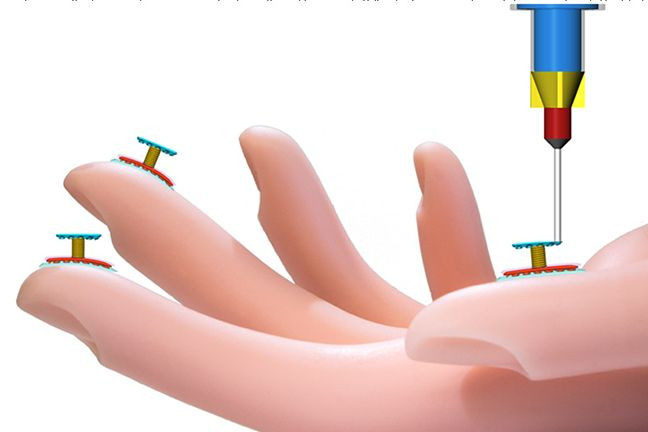Robots Could Get Sense Of Touch With 3D-Printed 'Bionic Skin'

The replicants from Blade Runner were very human-like, and one of the reasons they appeared human was because they had skins that didn't just look real but also had the sensation of touch. In fact, the derogatory term used in that particular story for fictional replicants was “skin-job.”
If new research by engineers at the University of Minnesota advances further, it could result in a “bionic skin” that lets robots have the sense of touch. Not only that, the technology — 3D printing stretchable electronic sensory devices — could, in the future, be applied to printing electronics on human skin.
The researchers published a study recently, describing their printing approach, in the journal Advanced Materials.
To create the fabric that works like a “bionic skin,” the researchers built a novel 3D printer in their lab. It has four nozzles that print using specialized “inks” of different materials in layers. The resulting fabric has “a base layer of silicone, top and bottom electrodes made of a conducting ink, a coil-shaped pressure sensor, and a sacrificial layer that holds the top layer in place while it sets.
The supporting sacrificial layer is later washed away in the final manufacturing process,” a Wednesday statement on the university’s website said.
Read: Robotic Cheetah That Improves Machines’ Energy Efficiency
“This is a completely new way to approach 3D printing of electronics,” Michael McAlpine, a University of Minnesota mechanical engineering associate professor and lead researcher on the study, said in the statement. “We have a multifunctional printer that can print several layers to make these flexible sensory devices. This could take us into so many directions from health monitoring to energy harvesting to chemical sensing.”
The material created can be stretched up to three times its original size, and all the various “inks” it uses function at room temperature. According to the researchers, the next step is to use semiconductor inks and print on real human skin. They have already managed to print on the curved surface of a model hand. And their experiments showed the fabric is sensitive enough to detect the pulse of the human body in real time.
Read: Are Human Hands Better At Manual Labor Than Robots?
“This stretchable electronic fabric we developed has many practical uses,” McAlpine said. “Putting this type of ‘bionic skin’ on surgical robots would give surgeons the ability to actually feel during minimally invasive surgeries, which would make surgery easier instead of just using cameras like they do now. These sensors could also make it easier for other robots to walk and interact with their environment.”
Other potential uses include creating wearable technology for monitoring health, or even in the military, where it could be used to detect explosives or dangerous chemicals.
Shuang-Zhuang Guo, Kaiyan Qiu, Fanben Meng, and Sung Hyun Park, all graduate students in the university’s Department of Mechanical Engineering, were part of the research team and co-authors of the study, titled “3D Printed Stretchable Tactile Sensors.”
© Copyright IBTimes 2024. All rights reserved.





















